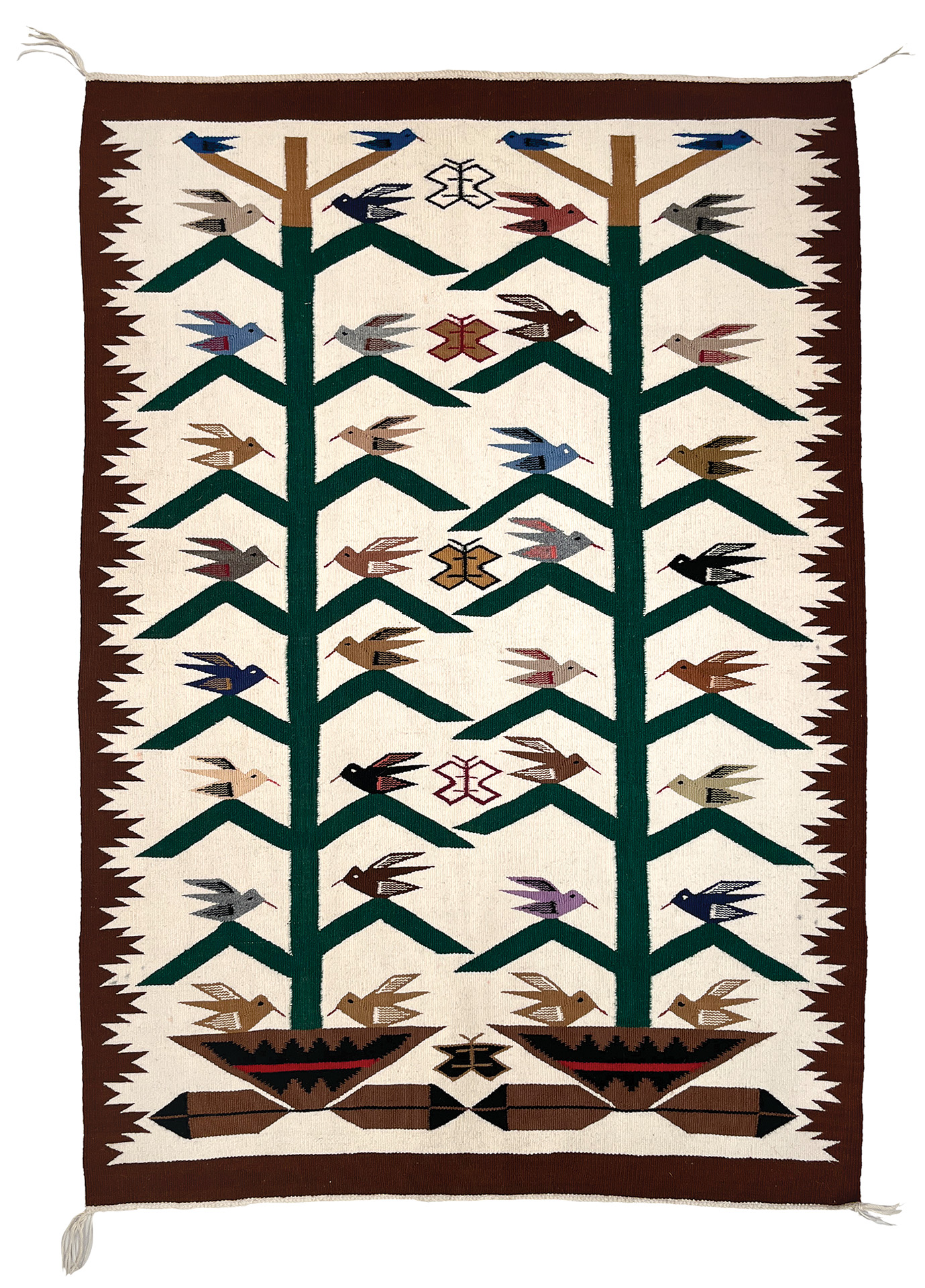Some information may be outdated.
“The People’s Tapestry: Weaving Tradition in Navajo Culture” is now on display at the Moab Museum, featuring a variety of styles of Navajo textiles, including the Tree of Life. In this column throughout the summer, the Museum team will feature a variety of weaving styles and their associated backgrounds and stories.
This exhibition is a celebration of the magnificent weavings created by the Diné (which means “the people” in Navajo). The significance of Diné textiles transcends artistic expression; weavers beautify their world through the spiritual act of weaving and integrate their art into the web of everyday life. The Navajo weaver’s song declares, “with beauty, it is woven.”
What are the origins of the Tree of Life weaving?
This weaving style first originated around Cedar Ridge, AZ, on the northwest side of the Navajo Nation in the early 1800s. It quickly became an important pictorial textile: corn, which is believed to have been given as a gift to the Navajo at creation, is the axis of this weaving style.
Distinct features of the Tree of Life
Tree of Life weavings depict corn stalks emerging from a Navajo Wedding Basket, along with natural elements such as birds.
The Wedding Basket, also referred to as the Navajo Ceremonial Basket, is used in nearly every significant life event including birth, weddings and death. It symbolizes security, health, and wellbeing, as well as the Navajo point of emergence. The main image of the weaving is bound by a distinct, dark border, and there are often tassel elements on these weavings that represent corn pollen, rainbows, and eagle feathers.
What does the Tree of Life signify?
The Tree of Life, often referred to as the “Cosmic Tree,” is an interpretation of where the Diné come from, their beliefs in the progression and movement of life, connections with their surroundings, and the involvement of their deities. Simply, the Tree of Life weaving represents the Navajo connection to the natural world and the importance of harmony and balance.
The pictorial elements are meant to represent progression and movement within life, as well as the connections between the Navajo, the Earth, and the Universe. Unlike the Yei, another style of Navajo weaving, which are inspired by ceremonial sandpaintings, the Tree of Life weavings had the reverse effect on other artistic and ceremonial forms as they inspired sandpaintings themselves.
The Moab Museum is dedicated to sharing stories of the natural and human history of the Moab area. This is part of a series highlighting distinct textiles and styles displayed in the Museum’s temporary exhibition “The People’s Tapestry,” displayed summer-winter 2023. To explore more of Moab’s stories and artifacts, find out about upcoming programs, and become a Member, visit www.moabmuseum.org.
Appreciate the coverage? Help keep local news alive.
Chip in to support the Moab Sun News.





